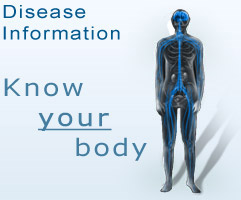Ebola Virus Disease
What is Ebola virus disease?
The Ebola virus disease (EVD) was previously known as Ebola haemorrhagic fever. It is a rare and often fatal disease caused by infection with one of the Ebola virus strains. Ebola can cause disease in humans and non-human primates (monkeys, gorillas, and chimpanzees). EVD is caused by infection with a virus of the family filoviridae, genus Ebolavirus.
EVD was first discovered in 1976 when two outbreaks occurred - one near the Ebola River, in the Democratic Republic of the Congo, and another in South Sudan. Since then, outbreaks have appeared sporadically throughout the northern and western parts of Africa. The origin of Ebola virus remains unknown. However, on the basis of evidence and the nature of similar viruses, researchers believe that the virus is animal-borne and that bats are the most likely reservoir (body in which an infectious substance normally lives and multiplies).
How do people become infected with Ebola?
The Ebola virus is thought to be transmitted to humans through direct contact (through broken skin or mucous membranes in the eyes, nose, or mouth, for example) such as:
- blood or body fluids (including but not limited to urine, saliva, sweat, faeces, vomit, breast milk and semen) of a person who is infected with Ebola
- objects (like clothing; bed linen; needles and syringes) that have been contaminated with the virus
- infected animals
- the result of handling bush meat (wild animals hunted for food) and contact with infected bats. There is no evidence that mosquitos or other insects can transmit the Ebola virus. Only mammals (for example humans, bats, monkeys, and apes) have shown the ability to become infected with and spread the Ebola virus.
Important note: Ebola virus is not spread through the air, food or water.
Who is at risk of being infected with Ebola virus?
During the EVD outbreak, the following persons are most at risk for infection:
- Healthcare workers
- Family members or friends in close contact with infected people, due to close contact with infectious secretions/bodily fluids when caring for ill persons
- Mourners who have direct contact with the bodies of the deceased as part of burial ceremonies
- Hunters/other persons in the rain forest who come into contact with infected animals in the forest
Signs and symptoms of Ebola virus
The symptoms start suddenly and may appear anywhere from within two to 21 days after exposure to Ebola (on average, eight to 10 days). This is called the incubation period where the person is well and shows no signs of being infected.
After the incubation period, a person infected with Ebola virus will typically have the following symptoms:
- Fever
- Severe headache
- Muscle pain
- Weakness and lethargy
- Diarrhoea
- Vomiting
- Abdominal (stomach) pain
- Unexplained haemorrhage (bleeding or bruising)
How is the Ebola virus diagnosed?
EVD can only be confirmed through laboratory testing, usually a blood test. A specialised laboratory at the National Institute for Communicable Diseases in Johannesburg is able to test for Ebola virus disease. EVD can only be diagnosed once a person develops signs and symptoms of the disease. There is currently no test available to detect infection whilst a person is still in the incubation period of the disease.
Treatment for Ebola virus
If a person feels unwell with the abovementioned symptoms and has visited an area where the Ebola outbreak occurred in the past 21 days, they should seek medical attention immediately.
The following basic interventions, when used early, can significantly improve your chances of survival:
- Providing intravenous fluids (IV) and balancing electrolytes (body salts)
- Maintaining oxygen status and blood pressure
- Treating other infections if they occur
Recovery from Ebola depends on good supportive care and the patient's immune response. To control further spread of Ebola virus, patients who are suspected to have EVD should be isolated from other patients and treated by healthcare workers using very strict precautions to prevent being infected.
Can the Ebola virus be prevented?
At this stage, no approved vaccine or medicine (e.g., antiviral drug) is available to treat the Ebola virus disease. Experimental vaccines and treatments for Ebola are under development, but they have not yet been fully tested for safety or effectiveness.
If you travel to or are in an area affected by an Ebola outbreak, make sure to do the following:
- Practice careful hygiene. For example, wash your hands with soap and water or an alcohol-based hand sanitizer and avoid contact with blood and body fluids.
- Do not handle items that may have come in contact with an infected person's blood or body fluids (such as clothes, bedding, needles and medical equipment).
- Avoid funeral or burial rituals that require handling the body of someone who has died from Ebola. Do not touch the body of a person who died from Ebola.
- Avoid contact with bats and non-human primates or blood, fluids and raw meat prepared from these animals.
- If possible, wear gloves and personal protective equipment (mask, face shield, eye goggles and a special suit or gown that will protect your body) if you are near someone with Ebola.
References:
1. Centres For Disease Control And Prevention. 19 October 2014. Ebola (Ebola Virus Disease). Website. http://www.cdc.gov/
2. National Institute For Communicable Diseases. 2014. Ebola virus disease. Website. http://www.nicd.ac.za/
3. World Health Organisation. Website. http://www.who.int/en/
 TransmedBanner4.jpg)

